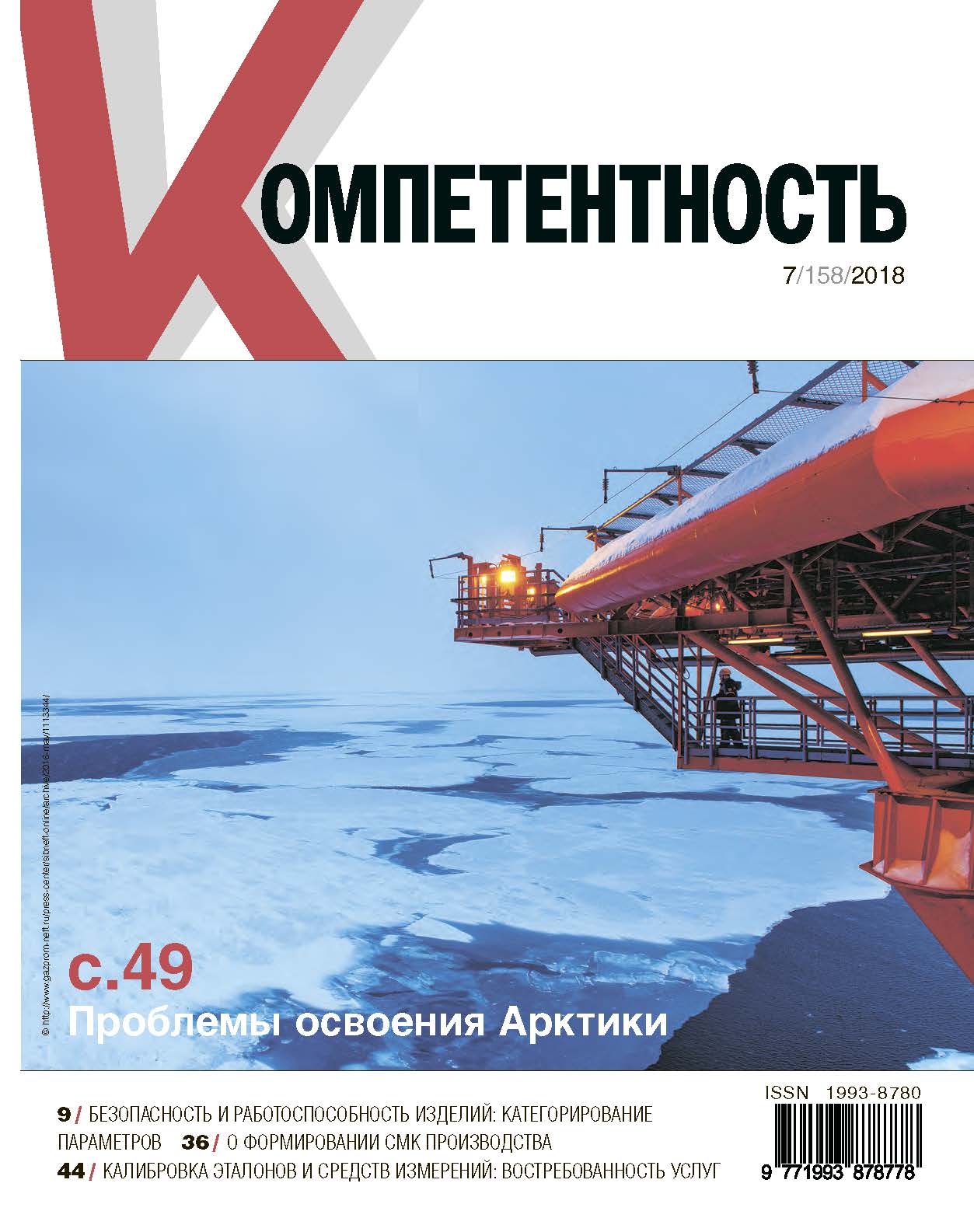Journal Kompetentnost': 7 / 158 / 2018
Articles
-
1
Method of Introducing New Requirements into the Existing Standardization System at the Enterprise
Authors: I.P. Vasil’eva, Head, Department for the Support of Academic Councils of the University, Postgraduate of the Department of Production of Aircraft and Quality Management in Mechanical Engineering of the FSAO Higher Education, S.P. Korolev Samara National Research University (Samara University), Samara, Russia, Wlada98@mail.ru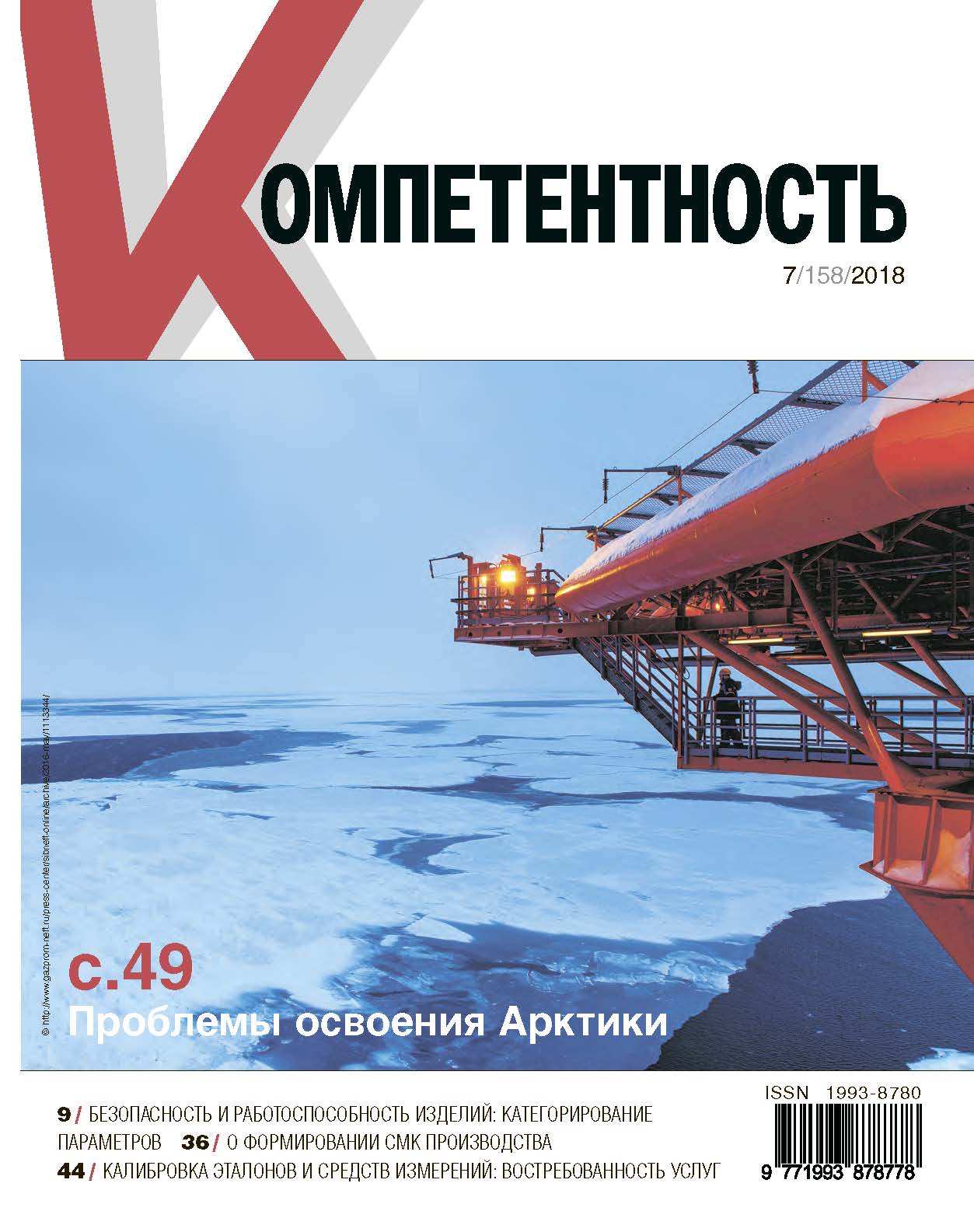 I studied the actual problem of introducing standards in the organization’s quality
I studied the actual problem of introducing standards in the organization’s quality
management system, the types of interaction. To analyze the consequences of potential
inconsistencies in the interaction of standards, I proposed the FMEA model and the
methodology for the overall assessment of the organization’s standardization system.
When developing standards for innovative products and/or technology, interactions
arise that can be described using set theory. As a result, the requirements of the
standards either complement, or they contradict one another.
As the number of standards increases, there are risks of their requirements conflict.
As a result of the analysis of standards, it becomes necessary to give an overall assessment
of the organization’s standardization system. To this end, I propose to evaluate the
following parameters: workload requirements, their feasibility, interaction, openness,
accessibility, compliance with documented information and deadlines requirements.
Download -
2
Categorizing the Parameters by Their Influence on the Safety and Performance of Products
Authors: Dr. N.S. Khersonskiy, Senior Researcher, General Director, Soyuzsert, Member of the Board of the All-Russian Quality Organization (VOK), Auditor of Russian and Foreign Certification Systems, Moscow, Russia I believe that for serial and mass production it is necessary to return to the classification
I believe that for serial and mass production it is necessary to return to the classification
of their parameters in accordance with the requirements of industry standard 84-612–
79. The information obtained as a result of the evaluation of the monitored parameters
must undergo statistical analysis. For serial and mass production it is recommended
to apply a system of statistical methods for monitoring, regulating and forecasting the
controlled parameters of products.
In the case of single and small-scale production of products and assembly units, it is
necessary to apply: automated control means; strict control of technological parameters,
as well as attestation of equipment and personnel; a priori (accumulated) information
on the controlled parameters of products and assembly units for forecasting the quality
of products and assembly units, as well as for assessing the technological risks of their
manufacture.
Download -
3
Development of a Procedure for Managing Internal Documentation for Industrial Enterprise
Authors: Dr. P.V. Golinitskiy, Senior Lecturer, Department of Metrology, Standardization and Quality Management, Russian State Agrarian University — Moscow Timiryazev Agricultural Academy, Moscow, Russia, gpv@rgau-msha.ruYu.G. Vergazova, Senior Lecturer, Department of Metrology, Standardization and Quality Management, Russian State Agrarian University — Moscow Timiryazev Agricultural Academy, Moscow, RussiaU.Yu. Antonova, Assistant, Department of Metrology, Standardization and Quality Management, Russian State Agrarian University — Moscow Timiryazev Agricultural Academy, Moscow, Russia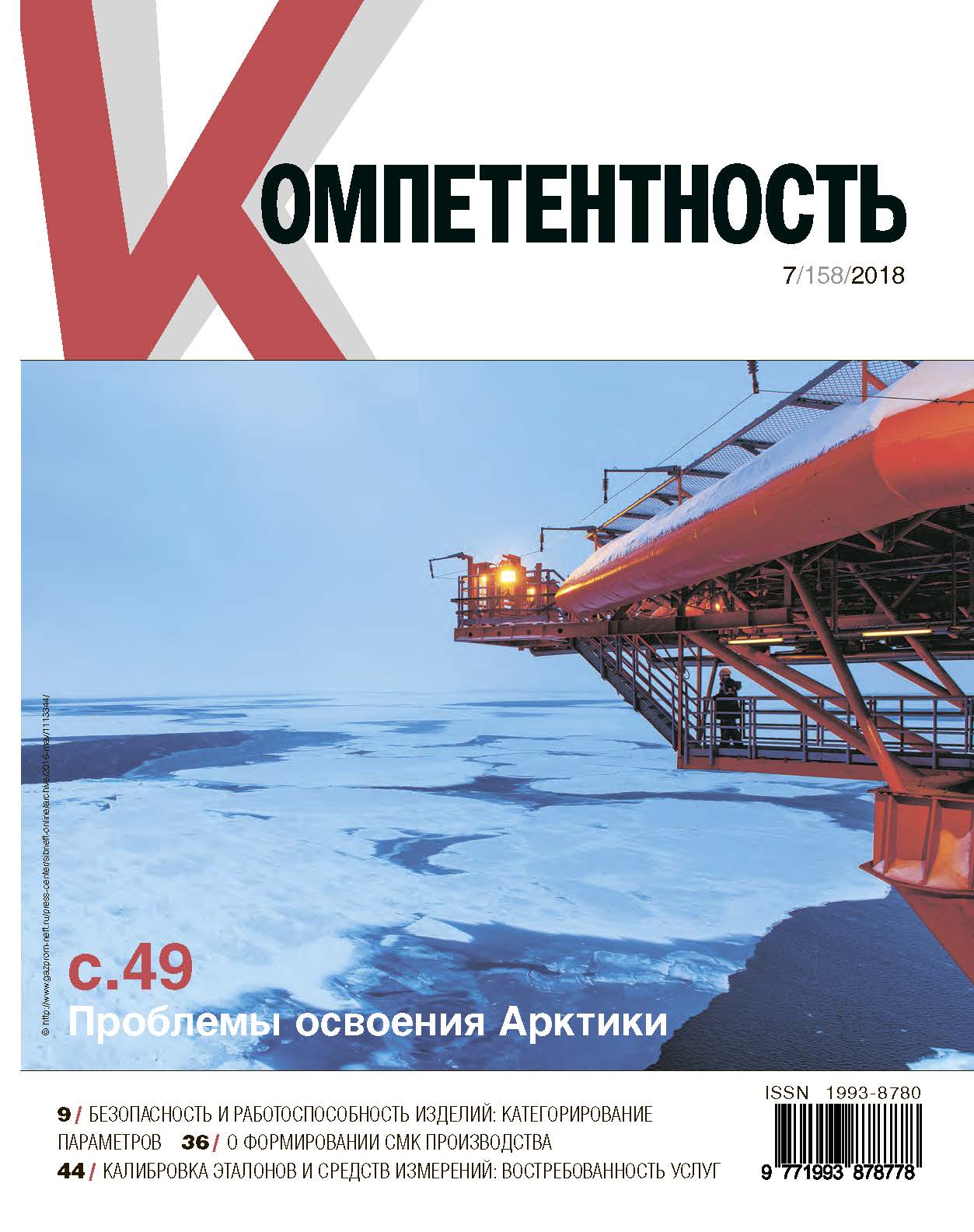 The effectiveness of the management system depends on the level of product quality
The effectiveness of the management system depends on the level of product quality
and customer satisfaction. After careful analysis of the implementation of the
system approach in the creation of QMS, we selected the necessary processes for
quality management in metrological assurance as the area with the greatest impact
on implementation. Then, a list of standards was developed for the eight main
categories of processes and the most important factors affecting the process were
identified.
We have developed a procedure for managing internal documentation and a
scheme for the development of documentation in the standards system of a machinebuilding
enterprise.
Download -
4
Formation of the Post-industrial Science Development Mechanism on the General Theory of Services
Authors: Dr. Assoc. Prof. V.V. Glushchenko, Professor, Department of Management and Personnel Management Organization, Russian University of Transportation, Moscow, Russia, glu-valery@yandex.ruDr. Assoc. Prof. I.I. Glushchenko, Professor, Department of Accounting and Statistics, Russian State Social University, Moscow, Russia prepodavatel-gii@mail.ru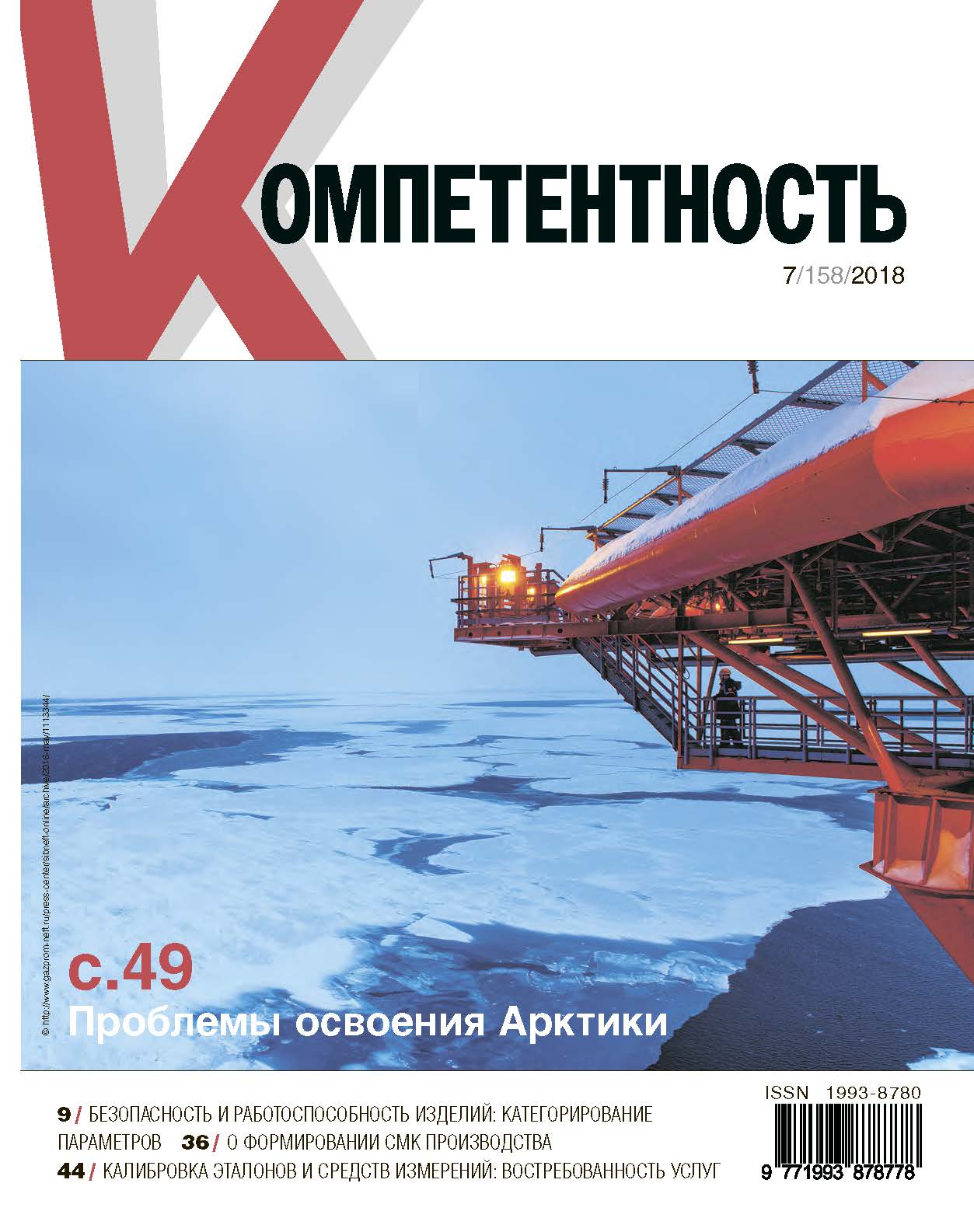 The subject of the article is the essence and structure of the mechanism for the
The subject of the article is the essence and structure of the mechanism for the
development and enhancement of the effectiveness of post-industrial science. The
article is devoted to the formation of a mechanism for the development and
enhancement of the efficiency of post-industrial science on the basis of a general theory
of services. The relevance of the article is related to the growing importance of science
in the context of post-industrial globalization, in the Russian science, the purpose of
this article is to form a mechanism for the development and increase of the effectiveness
of the post-industrial science, to achieve this goal, the following problems are solved:
the nature of post-industrial science is explored; the formation of a mechanism for the
development of post-industrial science on the basis of a general theory of services,
the importance of such important elements of the mechanism of development and
increasing the effectiveness of post-industrial science as mentoring, communication,
attention, proposed the functions of state academies of science in the development
and enhancement of post-industrial science, and the reliability of scientometric
assessments, it was proposed to use blocking technology, a method of financing
scientific investigations and innovative projects.
Download -
5
Quality Management Tools Application to Assess the Quality of Tobacco and Tobacco Products
Authors: O.V. Ivanova, Student, Analytical Chemistry, Certification and Quality Management (AHSMC) Department, Institute of Petroleum, Chemistry and Nanotechnology of the Kazan National Research Technological University, Kazan, Russia, olka_@mail.ruDr. R.N. Ismailova, Associate Professor, AHSMC Department, Institute of Petroleum, Chemistry and Nanotechnology of the Kazan National Research Technological University, Kazan, RussiaDr. N.G. Nikolaeva, Associate Professor, AHSMC Department, Institute of Petroleum, Chemistry and Nanotechnology of the Kazan National Research Technological University, Kazan, Russia To identify the shortcomings of modern documentation, we was used QFD method.
To identify the shortcomings of modern documentation, we was used QFD method.
As a result of the work done, we were convinced that today’s domestic regulatory
framework in the sphere of tobacco products production does not guarantee the
production of high-quality and popular products. This is due to the fact that in existing
regulatory documents the lack of a requirement to standardize indicators that affect the
quality of tobacco products.
Thus, the analysis of the Technical Regulations for tobacco products revealed that
of the important indicators it established requirements only for the content of tar and
nicotine, which does not reflect reliable data on its quality. We believe that in order to
produce high-quality and safe products, additional requirements must be added to the
regulatory documentation.
Download -
6
Formation of Manufacture Quality Management System
Authors: S.V. Lazarev, Postgraduate, N.Е. Bauman MSTU, Moscow, Russia, corpotdel@yandex.ruDr. S.G. Komarova, Associate Professor, D.I. Mendeleev Russian University of Chemical Technology, Moscow, Russia, komsvetka@yandex.ruDr. I.N. Omel’chenko, Head, Faculty of Engineering Business and Management, N.Е. Bauman MSTU, Moscow, Russia, logistic@ibm.bmstu.ru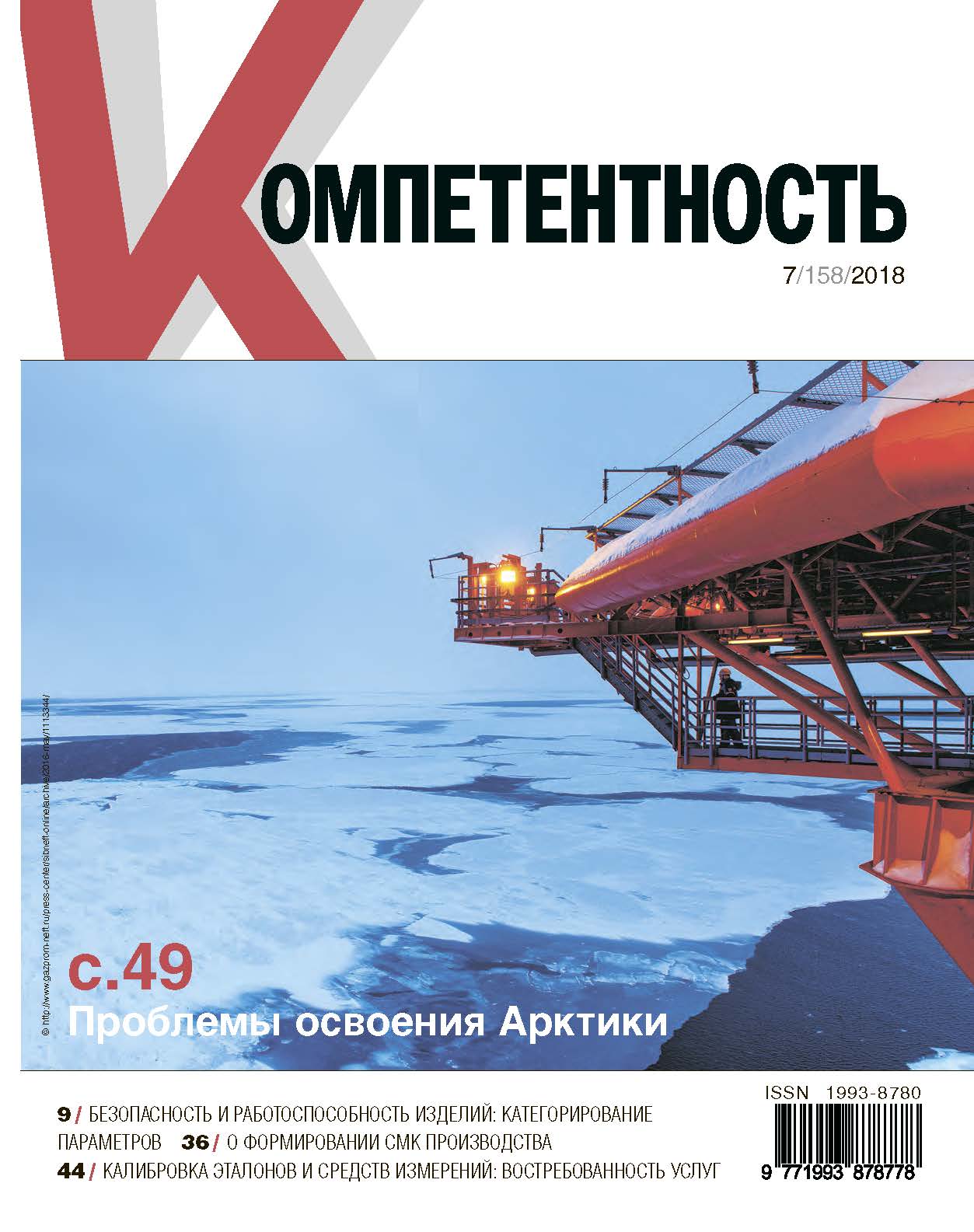 The article proposes the structure quality management system of the production
The article proposes the structure quality management system of the production
(QMSP), designed to ensure the quality of production processes. The QMSP consists
of four consecutive groups of elements: the installation of the subjects of the system,
the operating principles of the system, the direction of the system’s impact and the result
of the system’s impact. The importance of the sequence of implementation of the
principles as a key condition for the successful implementation of the QMSP is shown.
Among the principles of the QMSP development there are two main ones:
the principle of communication and the principle of eliminating deviations, which
have the greatest influence on the development of the QMSP both in the positive and
negative directions, with their active application and ignoring, respectively.
The important categories of maintenance of functioning of manufacture are
allocated: 1 — safety, 2 — quality, 3 — productivity, 4 — expenses. We recommended
to focus the attention of the company’s management on the categories in this sequence.
For example, increase productivity should be addressed after achieving the required
level of product quality. The directions of the system influence are indicated: man,
equipment, material, process, for which it is possible to form a deviation management
system as an important component of the ISPO in an industrial enterprise.
Download -
7
Assessment of the Relevance Calibration Services for Standards and Measuring Devices
Authors: N.A. Makeeva, Engineer 1-st Category, FATRM FBU The State Regional Center for Standardization, Metrology and Testing in the Orel Region, Orel, Russia, fbu@csm57.ru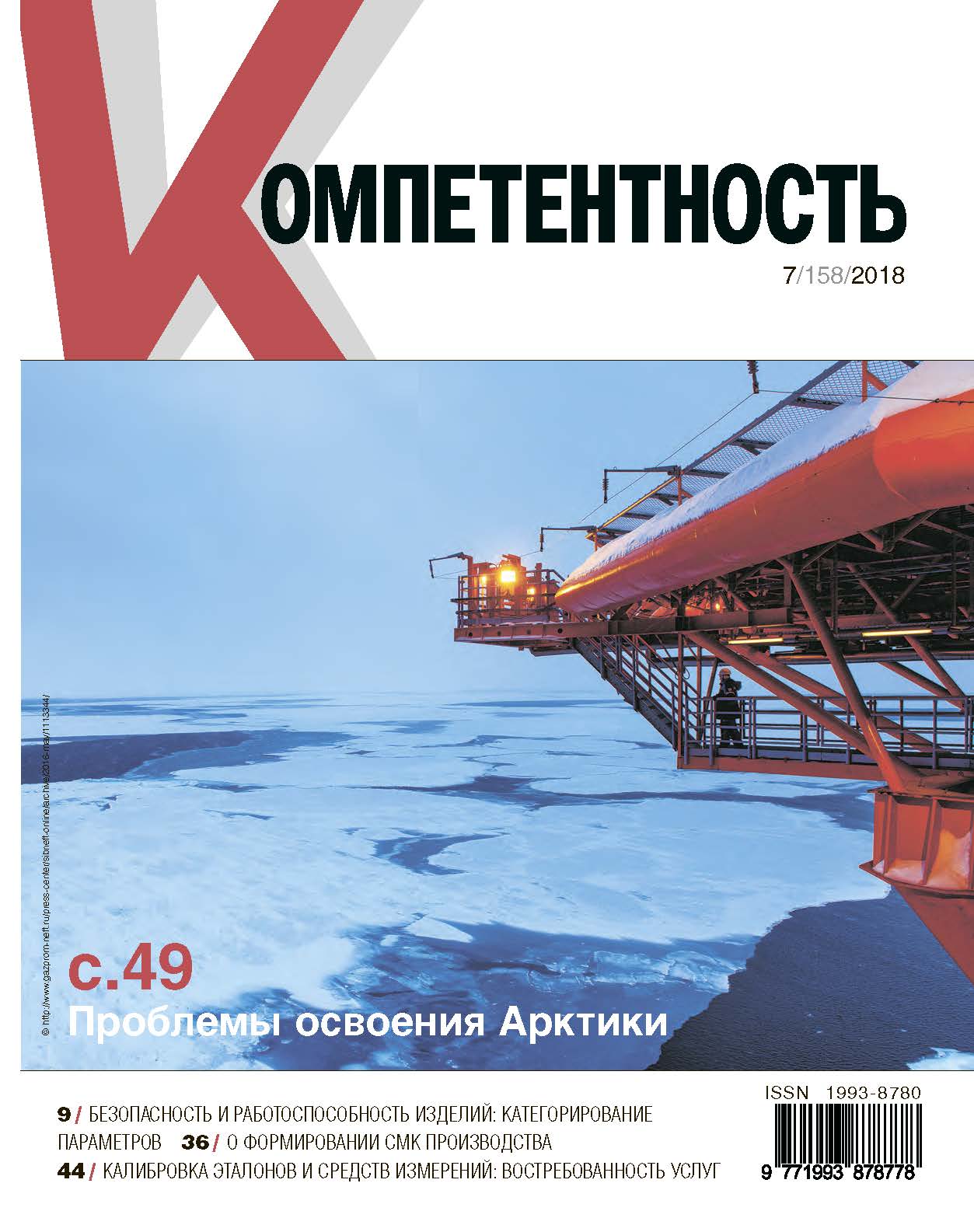 Unity and accuracy of measurements are the most important factors in the formation
Unity and accuracy of measurements are the most important factors in the formation
of the quality of products (services). Therefore, a high level of metrological support
of production is an indispensable condition for further improving the quality of products
(services) and production efficiency. I conducted an assessment of the relevance for
calibration services for standards and measuring instruments based on the results
of interview among specialists of metrological services of enterprises (organizations)
and institutions. The main directions of the work have been formulated, which, in the
opinion of the survey participants, will promote the promotion of calibration services
in the market of metrological services in Russia.
Download -
8
Scientifically Technical and Economic Problems of Arctic Development
Authors: Prof. Dr. V.Yu. Korchak, Chairman, Applied Problems Section of Russian Academy of Sciences, Full Member of Russian Academy of Rocket and Artillery Sciences, Moscow, Russia, korchak.v@mail.ruDr. E.Z. Tuzhikov, Leading Researcher, Applied Problems Section of Russian Academy of Sciences, Advisor of Russian Academy of Rocket and Artillery Sciences, Moscow, Russia, tujikov_ez@mail.ruDr. L.A. Kotelyuk, Leading Researcher, Applied Problems Section of Russian Academy of Sciences, Moscow, Russia, lak2004@yandex.ru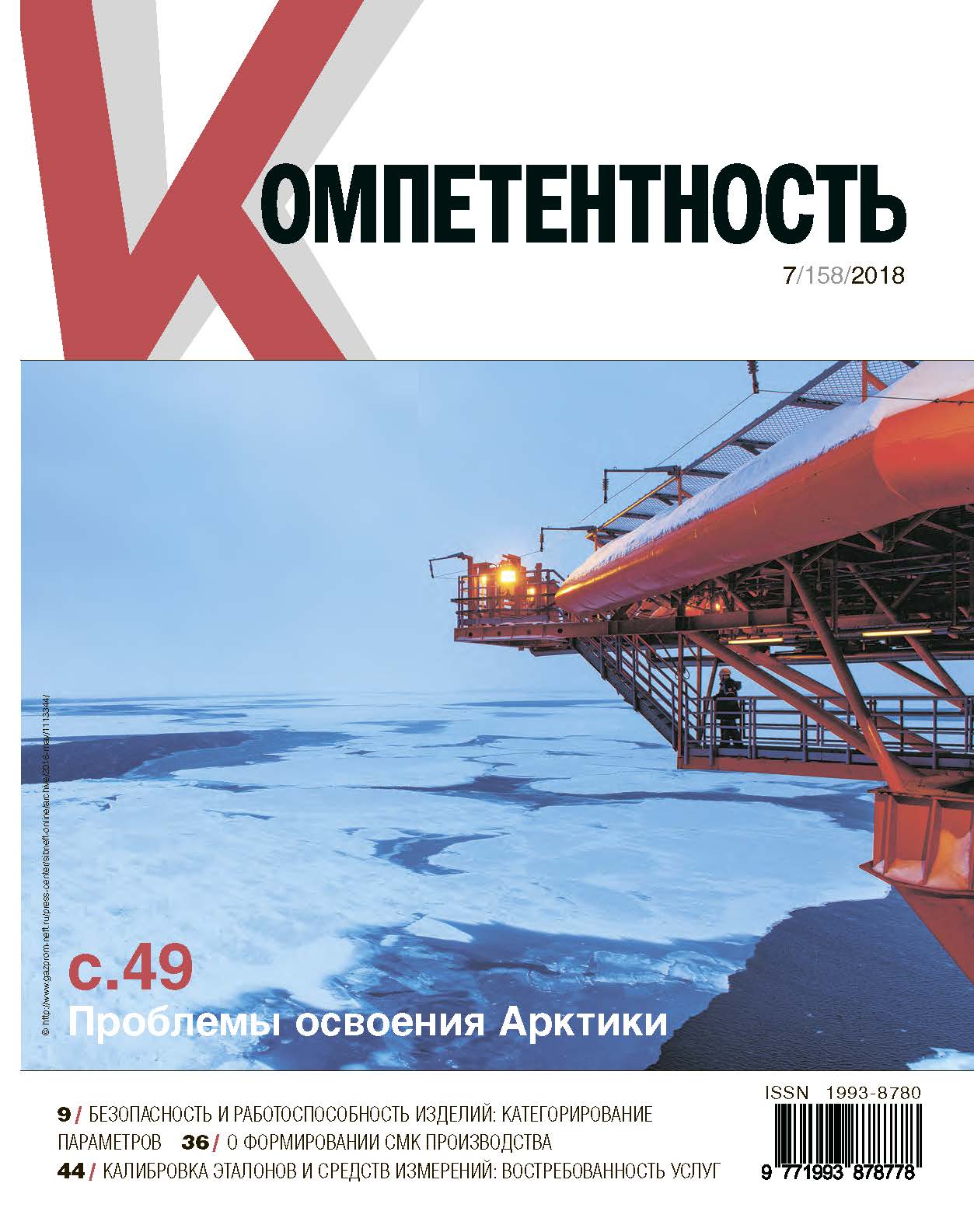 The Arctic zone is a region of exceptional importance for the economy, national security
The Arctic zone is a region of exceptional importance for the economy, national security
and foreign economic relations of the Russian Federation. Russia’s mineral and raw
material potential is generally sufficient for an independent and effective economic
policy in the Arctic. There is a developed infrastructure of marine communications. The
effective integration of the mineral resources of this zone in the development processes
of the country requires a turn to the ideology and practice of sustainable development
in combination with modern political, federal, socio-economic and organizational
approaches. The article analyzes and summarizes the materials of the Russian Academy
of Sciences, covering a wide range of relevant Arctic research and reflecting the
scientific achievements of teams of scientists on the Arctic theme.
Download



